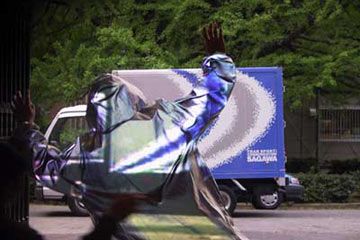For witches and wizards living in the U.K., buying a wand used to be easy. All you had to do was go to Ollivanders in Diagon Alley, London. Mr. Ollivander's bewitched measuring tape would measure you from every angle, and the proprietor would use his skills and intuition to select the best wands for you to try. The choice of which wand to buy wouldn't be up to you, though -- it would be up to the wand.
Unfortunately, Mr. Ollivander has vanished. Naturally, it's become a lot harder to buy a new wand, but there's a far more sinister side to Mr. Ollivander's disappearance. The Ollivander family has more than 2,000 years of wand-making experience, and Mr. Ollivander is widely regarded as the world's best wand maker. As such, he may be the only person who can help Lord Voldemort overcome a particular problem in his attempt for world domination. His wand will not work properly when fighting Harry Potter's.
Advertisement
People who have been following Harry Potter's saga probably know precisely why this happens. But for those who don't know Harry's history, it can be helpful to have a little background information about wands in general, Harry's wand in particular and how the two wands' incompatibility may affect the course of the war.
Wands are essential to almost all magic, but there are some notable exceptions. For example, animagi, or wizards who can change themselves into animals, can do so without their wands. The same is true for metamorphmagi, or wizards who can change their appearance. Most witches and wizards can cast some spells without using their wands, and very powerful wizards, like Albus Dumbledore, can sometimes perform great magical feats without them.
But to do good magic, you need a wand, and once you have a wand, it can be a versatile tool. In spite of Severus Snape's implications to the contrary, using a wand is a required step in most potion recipes. A wand can also remove strands of human memory and transfer them to a memory-storage device known as a Pensieve. With the lumos spell, a wand can become a flashlight. With the right wand movement and incantation, a wizard can do simple spells, like fetching distant objects (accio), or spells that require powerful magic, like summoning a protective Patronus (Expecto Patronum). Experienced wizards can also use their wands to perform spells without saying incantations aloud.
A wand's ability to do all this comes from the way it interacts with the witch or wizard who carries it. Next, we'll look at exactly what happens and at the different varieties of wands.
Advertisement




